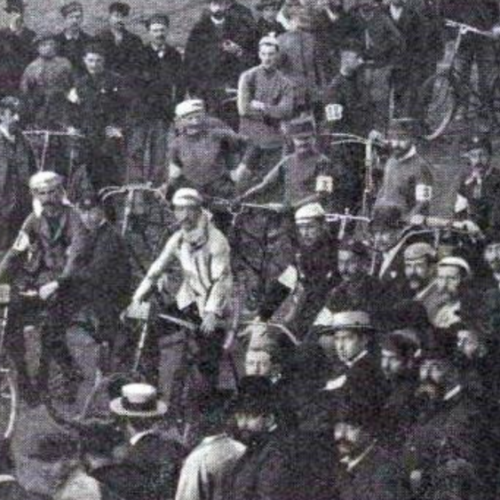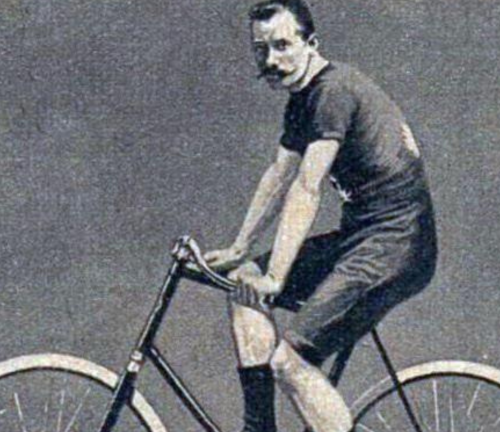Although the year 1893 for the first long-distance cycling road race in the region sounds pretty impressive (just think about, the first Bordeaux-Paris was organized only 2 years earlier in 1891), there were some circumstances, which demonstrated too well, that the Vienna-Berlin race was a tipically late 19th-centurian Central-European event.
The idea for the cycling race came from the military world: there was a long-distance horse riding event between Berlin and Vienna, an exercise for Austro-Hungarian and German military officers in 1892. The cyling race was planned during the same time, but was not permitted by the Prussian Ministry of War. Also, this was the time, when cycling was prohibited for the members of the army, also
it was bannned from the public streets of Berlin.
Johannes Pundt, one of the most important figures of the German cycling world in the 19th century, founded a comité for organizing the road cycling race between the two big Central-European capitals. The upcoming cycling race was for “gentleman riders”, a.k.a amateurs.
Already days before the start of the actual race, several other cycling related events were held in Vienna.
The race with 117 cyclists started at 6 a.m on 29th June 1893 in front of a crowd of 8000 spectators. During the 582,5 km long road, there were 300 check points included. Reports on the actual standing of the race were transmitted by telegraphs. Fun fact: the competitors needed a passport to cross the border betwen Austria-Hungary and Germany, which was provided by the organizers.
No wonder, that the Prussian Army did not want any rivals for their riding officers during their training. The cyclists completed the course in half as much time as the horse riding militery men, despite the poor road conditions and bad weather. The winner of the race, Josef Fischer (winner of the firts Paris-Roubaix three years later), crossed the finish line after 31 hour, while the horse riders managed to reach the finish only after 72 hours. (Also, 30 horses died after that event within in a week.)
The first Vienna-Berlin proved, that bicycle is a fast and practical vehicle.
Similar to the festivites in Vienna, also in Berlin several cycling related events were held and the competitors were cheered by thousands. 30 cyclists completed the course.
During the next decade, the road race Vienna-Berlin was orgsnized five more times.
Further reading
Rüdiger Rabenstein: Die Distanz-Radfahrt Wien – Berlin 1893. Impulse – Einflüsse – Kontroversen. In: Sozial- und Zeitgeschichte des Sports, 10. Jg., Heft 1/1996, S. 42–56.
Anne-Katrin Ebert, Radelnde Nationen: Die Geschichte des Fahrrads in Deutschland und den Niederlanden bis 1940: Das Radfahren als nationale Bewegung: „Erfundene Traditionen“ und Inszenierungen. Campus-Verlag, 2010


